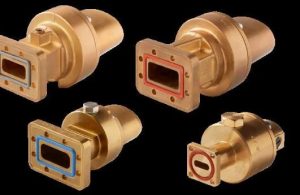How Is Waveguide Bending Achieved?
Understanding the Need for Waveguide Bending
In the intricate world of RF and microwave systems, waveguide bending is a crucial process that allows waveguides to navigate around physical obstacles and fit into compact spaces without compromising signal integrity. Given the rigid nature of standard waveguides, bending them to suit specific installation requirements presents both a technical challenge and a necessity.

Types of Waveguide Bends
E-Plane and H-Plane Bends
Waveguides can be bent in two principal planes: the E-plane and the H-plane. E-plane bends change the direction of the waveguide in the plane of the electric field, while H-plane bends alter the direction in the plane of the magnetic field. The choice of bending plane affects how the waveguide will handle the RF signals, especially in terms of minimizing signal loss and reflection.
Precision in Bending Angles
The bending of a waveguide is typically precise, with common angles being 90 degrees and 45 degrees, though custom angles can be manufactured to meet specific design criteria. These precise bends are essential to ensure that the waveguide maintains its internal dimensions and shape, which are critical for the unimpeded flow of electromagnetic waves.
Methods of Achieving Waveguide Bends
Mandrel Bending
One common method for bending waveguides is mandrel bending, where a waveguide is pushed over a pre-shaped mandrel to achieve the desired angle. This method is favored for its ability to maintain the uniformity of the waveguide's internal dimensions throughout the bend, which is vital for reducing signal attenuation.
Press Bending
Press bending is another technique where the waveguide is bent using a mechanical press that forces the waveguide into a die set to the required angle. This method is typically quicker than mandrel bending and is used for less critical applications where a small degree of deformation is acceptable.
Materials and Fabrication Techniques
Material Selection
The materials used for constructing waveguides that will be bent include copper, aluminum, and brass, each chosen for their specific properties like conductivity, malleability, and resistance to corrosion. The material selection directly impacts the effectiveness and ease of the bending process.
Fabrication Challenges
Fabricating bent waveguides requires meticulous attention to detail to prevent wall thinning, cracks, or deformations that could lead to increased signal loss. Advanced fabrication techniques, such as CNC machining, are often employed to ensure high precision and repeatability.
Applications and Importance
Bent waveguides are extensively used in satellite communications, radar systems, and aerospace applications where space constraints are common. The ability to guide RF energy efficiently around corners and through complex assemblies without significant losses is crucial for the overall performance of these systems.
Conclusion
Waveguide bending is a sophisticated process that plays a pivotal role in modern RF and microwave system design. The ability to precisely navigate physical constraints while maintaining signal integrity is what makes waveguide bending an essential technique in the field of electromagnetic transmission. Through advanced materials and precise manufacturing processes, engineers can ensure that even the most complex systems perform optimally, meeting the stringent demands of today's technology landscapes.